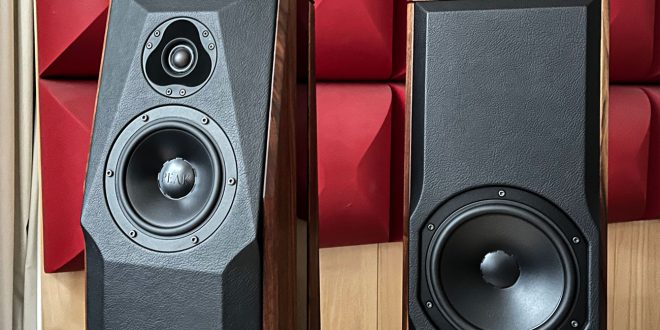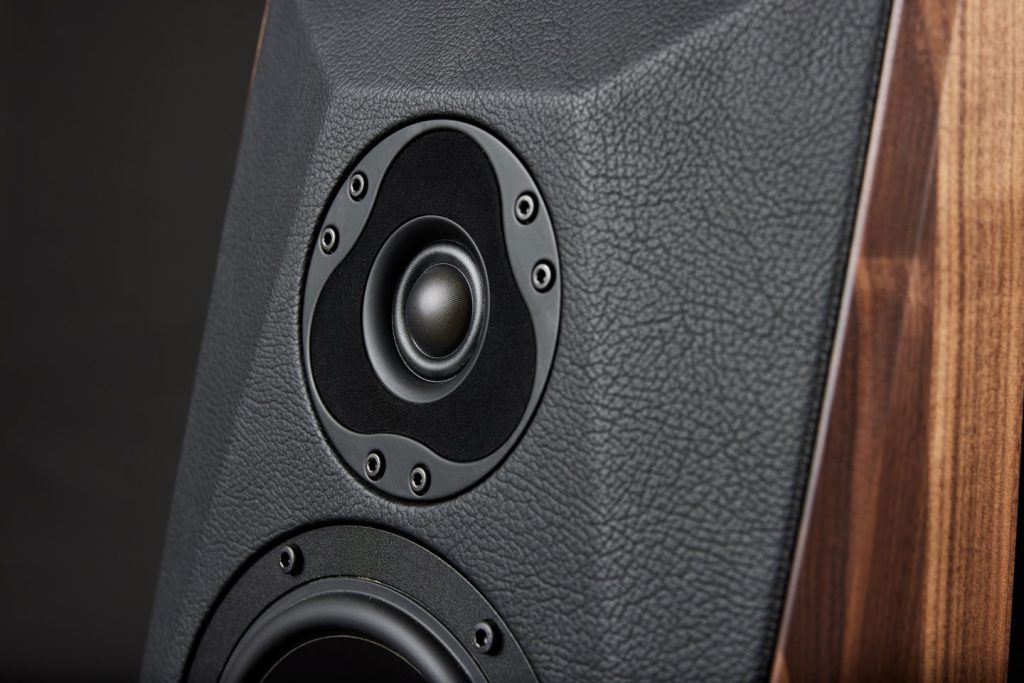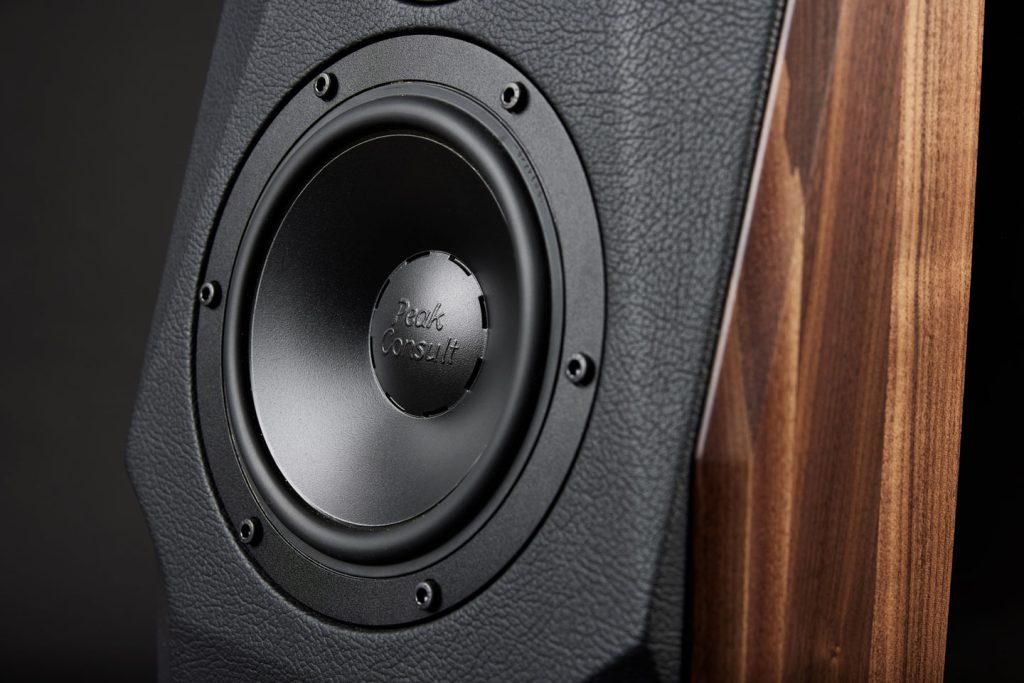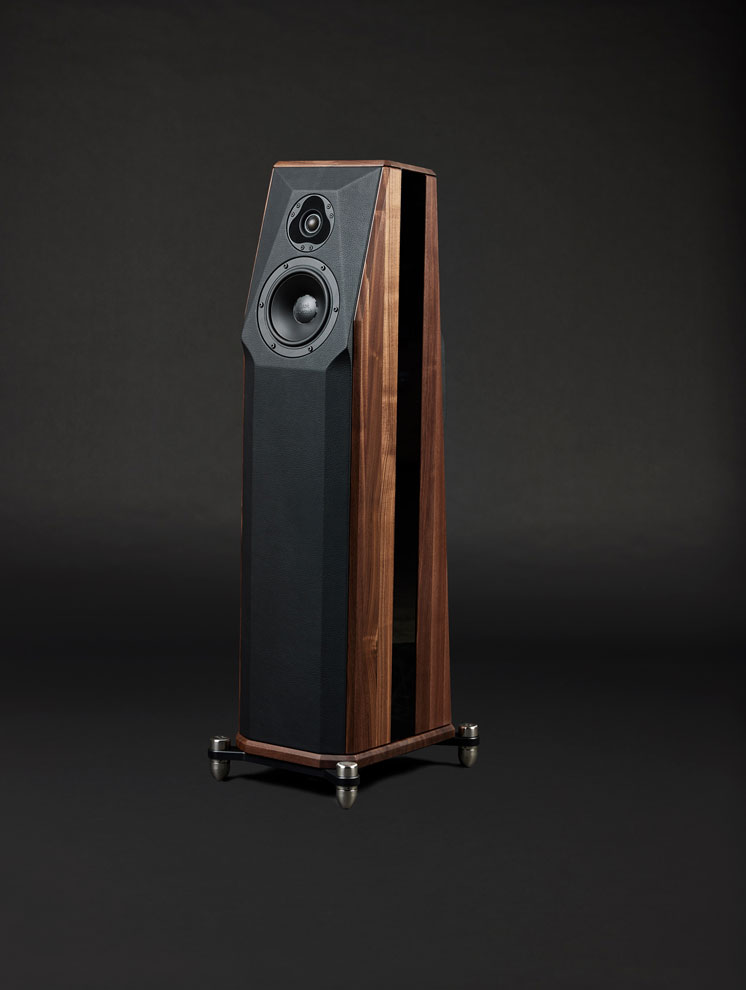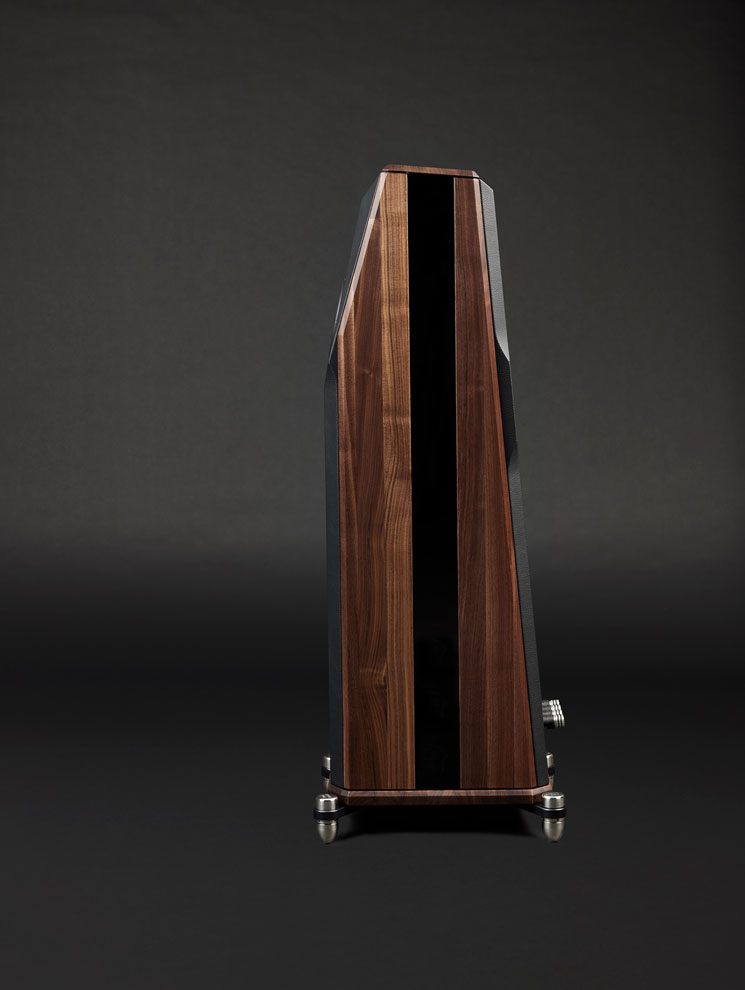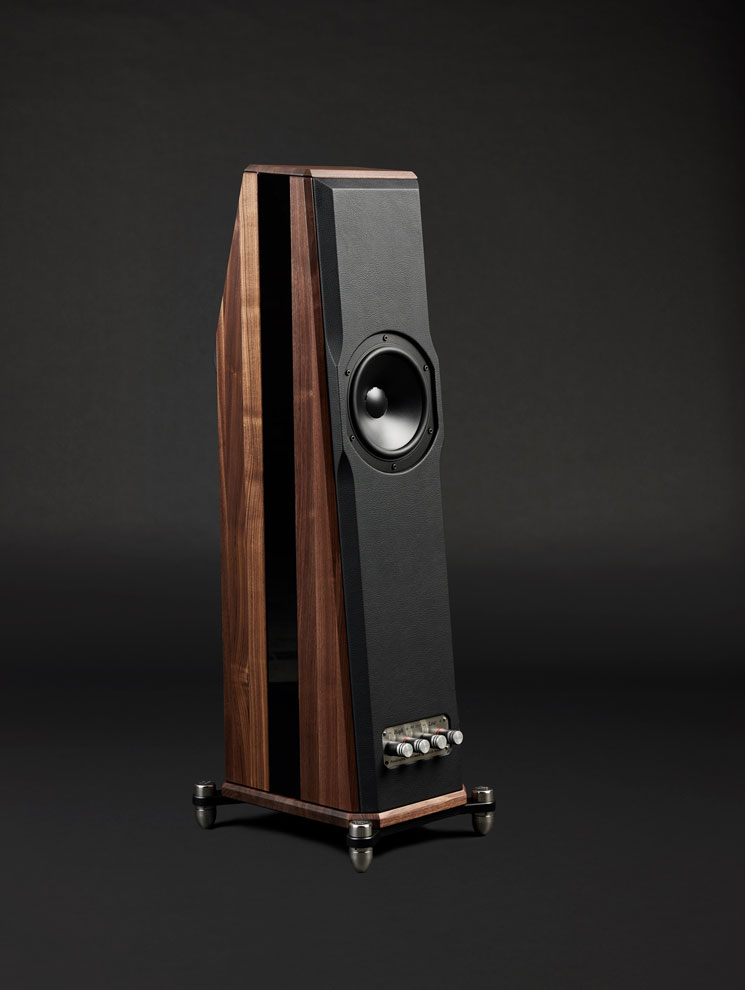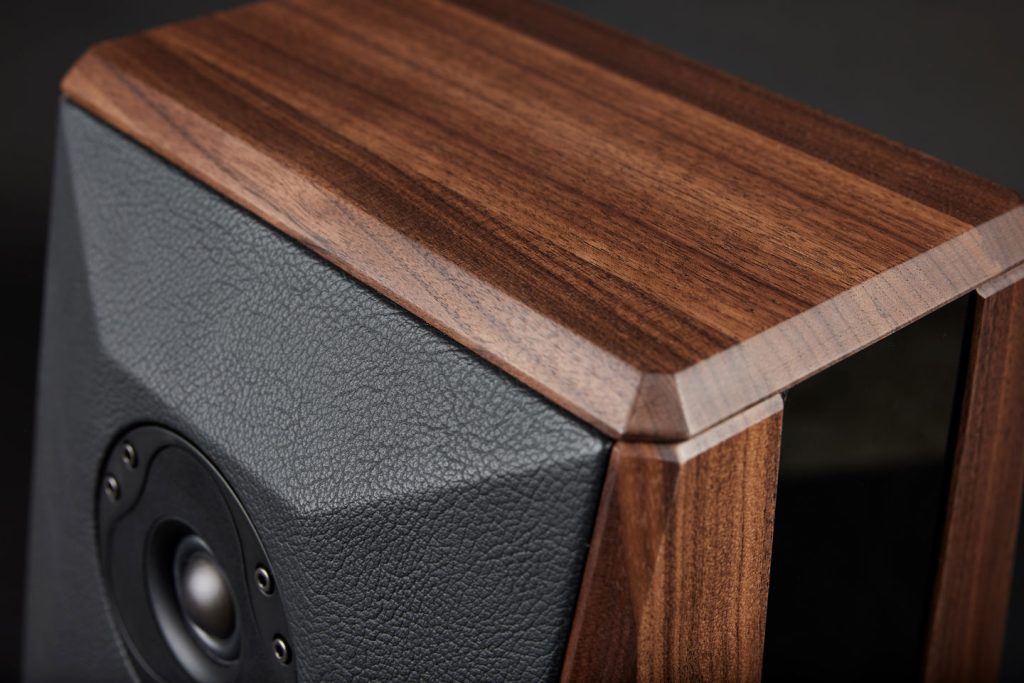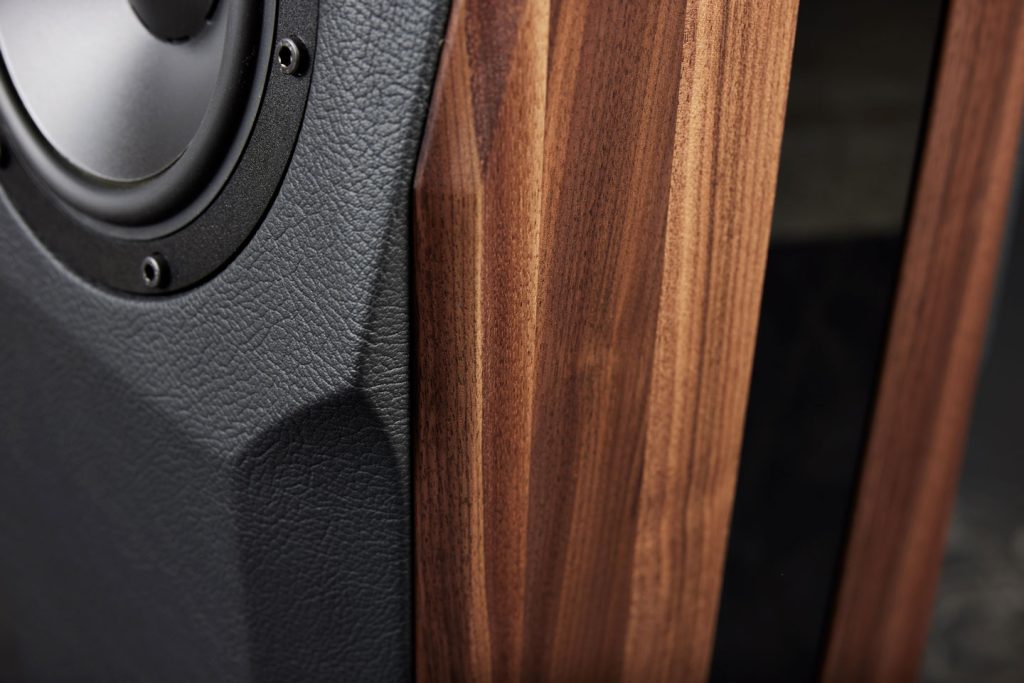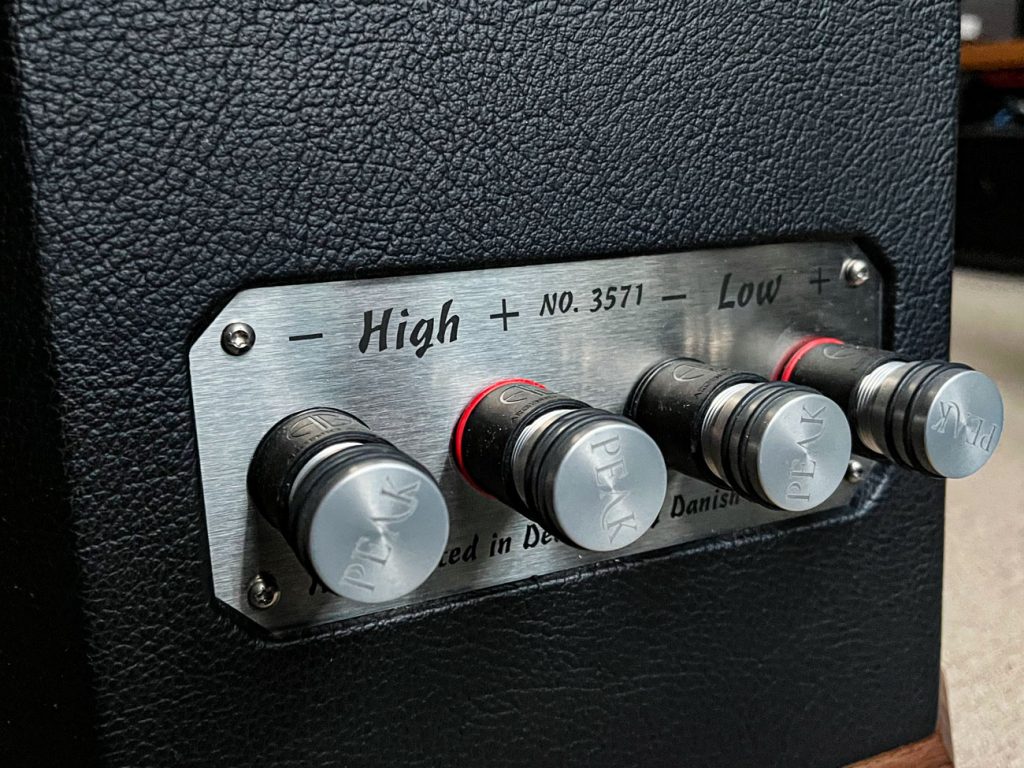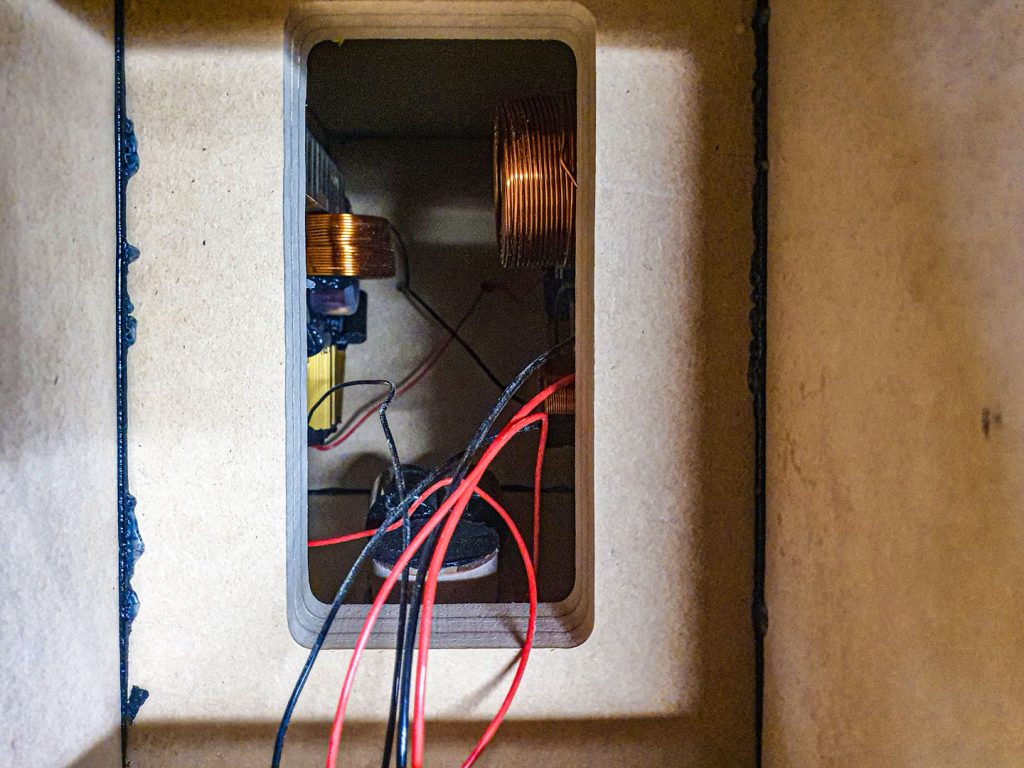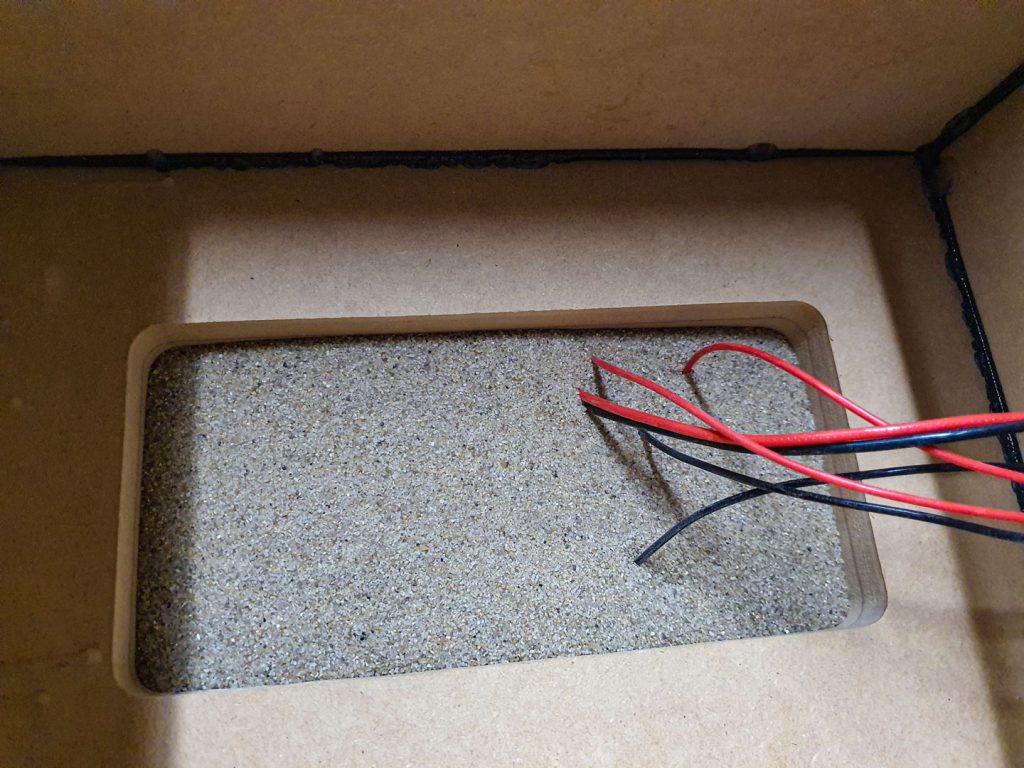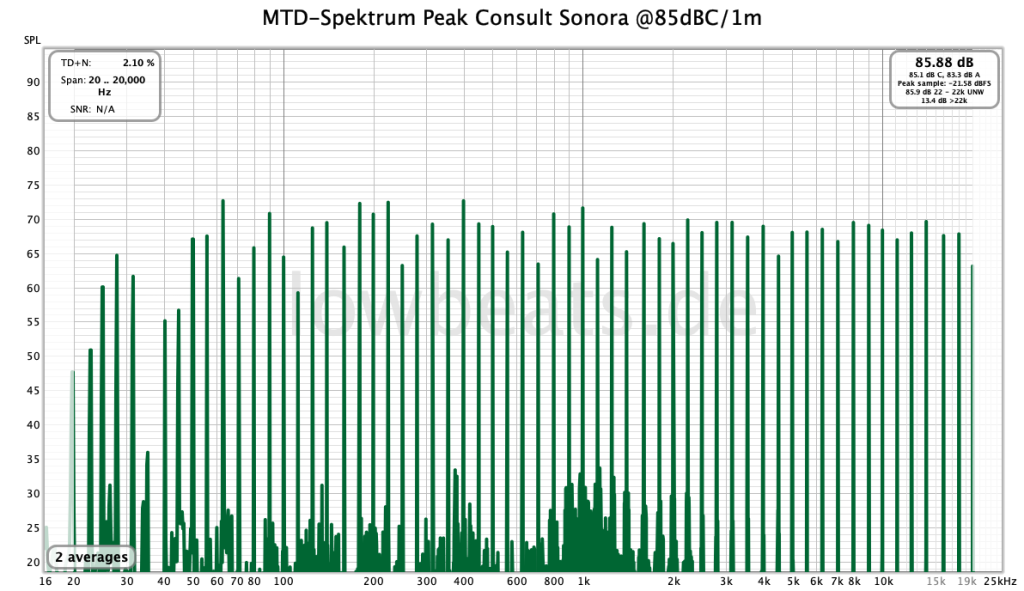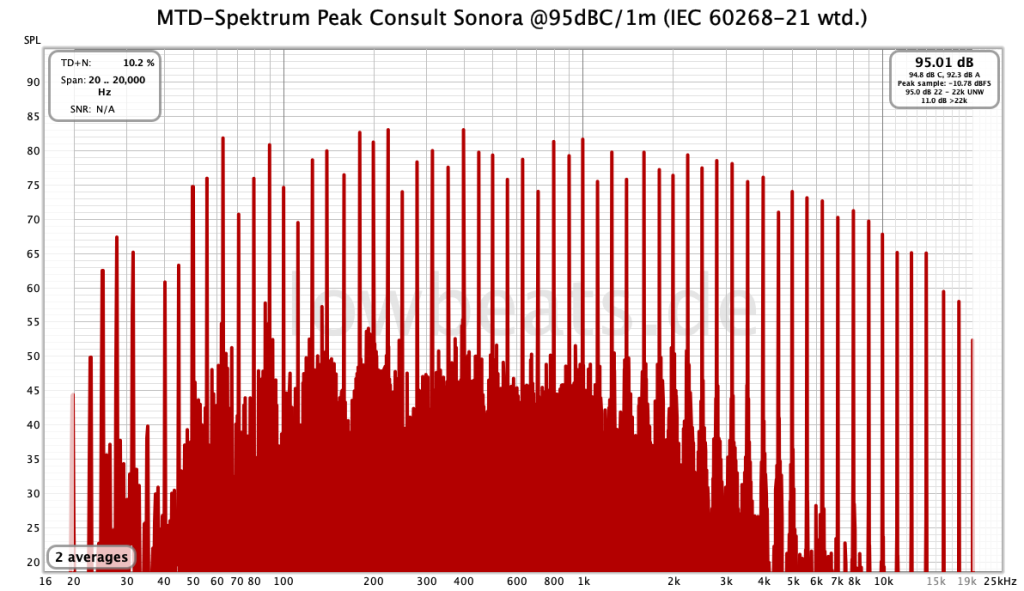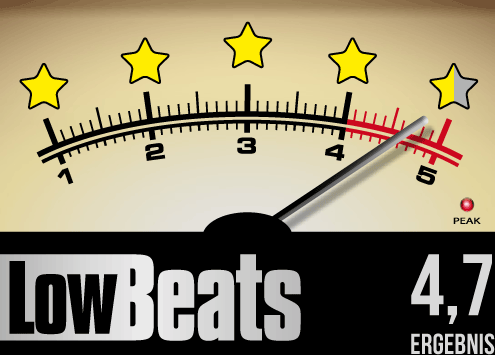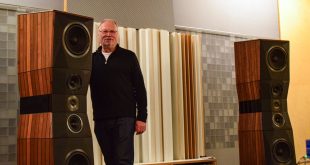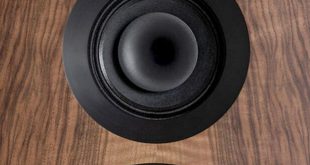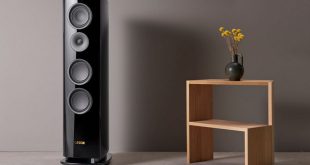The Peak Consult Sonora is just a 2-way design in floor standing speaker format. But everything about it is so consistently realized that its basic virtues make it one of the best that LowBeats has ever played. The story starts back in 1996 and I’m probably doing company founder Per Kristoffersen an injustice by not starting this review until 2021. That’s when Wilfried Ehrenholz and his partner Lennart Asbjørn joined the Danish loudspeaker manufacturer Peak Audio, which – it’s fair to say – had been largely under the radar of audiophile perception for 25 years. Ehrenholz is no stranger to the industry: He was a co-founder and long the sole owner of Dynaudio until he sold the flagship company to the Goertek Group in 2014. In 2018, he also left the last shares to the Chinese and from then on, he could have done a marvelous job as a grandfather…
But he didn’t. He saw this small company with its uniquely consistent housings and huge untapped potential – and his fingers itched again. So he took over the financially ailing company, kept the former owner Per Kristoffersen on as production manager, gradually introduced professional structures and turned Peak Audio into the new/old company Peak Consult.
And Ehrenholz was not alone: in addition to Jan Geschke, probably the best-known advertiser in the European hi-fi scene, Ehrenholz was also able to recruit developer Karl-Heinz Fink as a consultant to take the existing models to an even higher level in terms of sound quality.
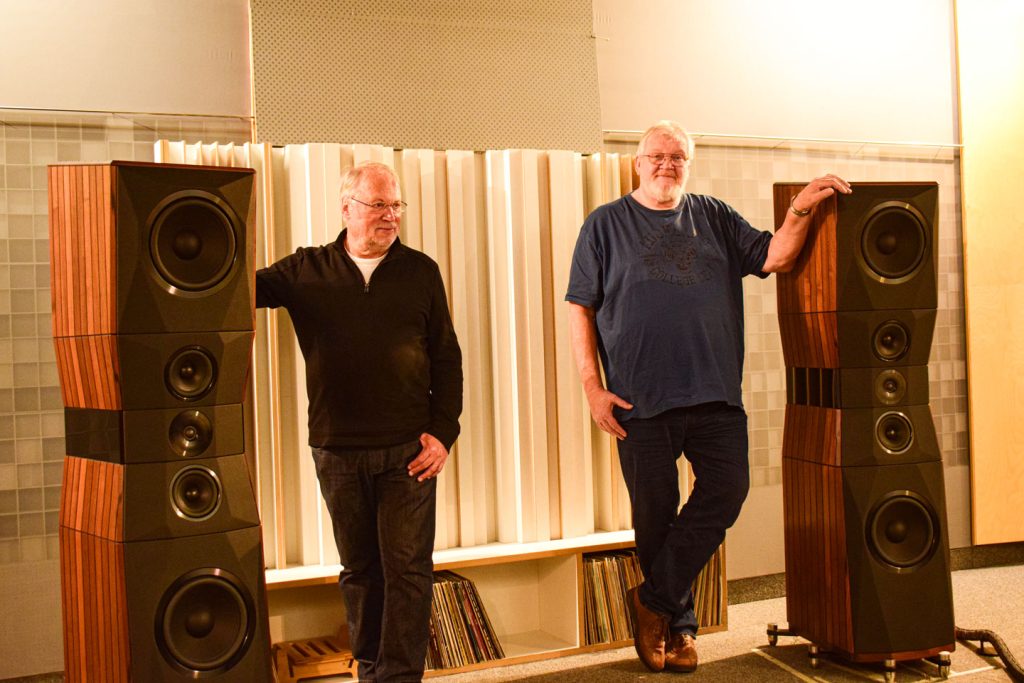
But while awareness of the new Danish luxury brand is only gradually growing, another goal has already been achieved: With the huge Dragon Legend MK2 (which was already presented at the HIGH END 2023 ), Ehrenholz and Fink have already set new sound standards. And the new edition of the Sonora, the entry-level model at Peak Consult, was so convincing that it makes an excellent ambassador for the sonic ideals of Mr. Ehrenholz and Mr. Fink…
What’s special about the Peak Consult Sonora
One is involuntarily reminded of Dynaudio. What has always characterized Dynaudio was the outstandingly good harmony of the drivers – especially in their compact speakers with a large dome tweeter and 17 cm (43,18 in) bass-midrange driver. This is exactly what we find here: The Sonora is a 2-way design with very similar components – except that neither the tweeter (Scan-Speak) nor the bass-midrange drivers (AudioTechnoloy) are from Dynaudio and that instead of a bass reflex port, a 20 cm (50,8 in) passive cone at the rear provides more bass boost.
Both the tweeter and the bass-midrange driver are among the best that speaker technology has achieved to date. And yet Karl-Heinz Fink (who develops the drivers himself for other brands) was still able to introduce decisive distortion-reducing improvements at various points.
However, the decisive factor in the Danish transducers was and is the mechanics of the cabinets. There are clearly masters at work here, which becomes clear as soon as you unpack the speaker. With your hands you feel the flawless workmanship. And your back feels that these “small entry-level speakers” should never be lifted alone. A Sonora is said to weigh just under 50 kilos (110 lb). I haven’t weighed it, but I think the figure is greatly understated and suspect it’s closer to 75 kilos (175 lb). In short, the Sonora may have a delicate shape, but it feels like it has been poured with concrete.
And the idea of a concrete filling is not entirely wrong. Cabinet maker Per Kristoffersen uses three layers of HDF (high-density fiberboard) and covers this already extremely solid construction with 14 millimeters (0,55 inches) thick real wood planks. The walls are thus up to 60 millimeters (2,36 inches) thick and simply do not vibrate. The Sonora responds to the usual knuckle test with – nothing. A quiet, immediately subsiding “thud”. That’s it. Even the large models from Wilson, Lyravox or Magico vibrate a little longer here.
And if that wasn’t enough, the lower quarter of the housing, where the crossover is located, is completely filled with the finest sand. That alone should be good for at least 15 kilos. Karl-Heinz Fink comments. “We used to do that a lot. But I had forgotten how much better a sand-damped crossover sounds.”
The crossover separates the woofer and tweeter at 2,500 hertz with 12 dB/per octave. For the filters, Fink uses the best from specialists Mundorf, Jantzen and Duelund – complex, but to be expected. However, the impedance linearization above 100 Hertz is particularly impressive. Rarely have I seen a smoother curve of impedance, phase and EPDR.
Practice
The LowBeats measurementappears to be straight out of the textbook: Impedance and phase are linear and virtually without any offset. This kind of behavior makes it particularly easy for the connected amplifier.
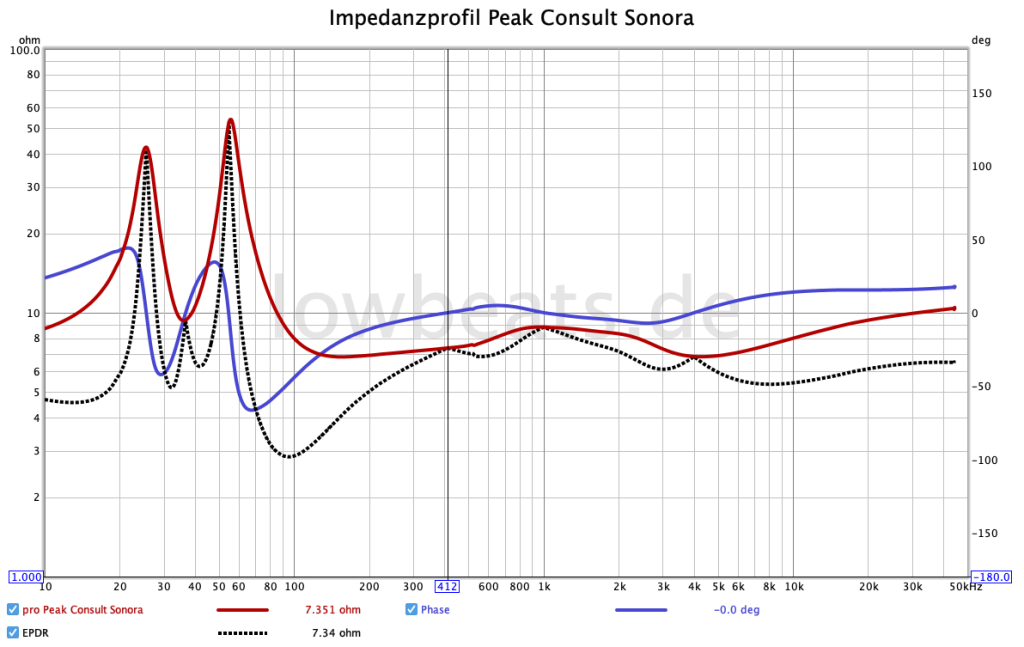
Now nobody would think of combining a – let’s say – 1,000 euro amplifier like the Cambridge CX 61 with this 25,000 euro transducer. But this is possible because the Sonora is completely undemanding in terms of power and because it is actually already completely exhausted with a good 100 watts.
This is mainly due to the low tuning – there is very little efficiency left. 83 dB (at 2.83 volts/meter) was measured by the laboratory. This is comparatively inefficient for a modern loudspeaker and at the end of the day leads to a rather low maximum level and not a particularly high power handling capacity. As I said: 100 watts per channel is actually quite sufficient, because more than that would quickly overload the delicate floorstanding speaker. But you always have to keep in mind: The Sonora is actually a cultivated and high-pitched compact speaker. If you want to fill large halls with dynamic sound, you’d better look elsewhere…
During the Sonora test I once again had a Westend Audio Monaco to listen to for a few days. That sounded intoxicatingly colorful, fine and open with the Sonora. But this experience is quite expensive, because the tube amplifier is almost as expensive as the loudspeaker. The Soul Note A-2 is recommended for those who prefer a smaller size. This is currently my favorite (transistor) amplifier under 10,000 euros and even with it the Sonora sounded beguiling…
Hearing test
The Sonora is one of those speakers that captivates you from the very first moment. Such an unagitated, balanced and natural, yet always finely nuanced reproduction is rare; voices come across with a fervor and intensity that one would wish for from all loudspeakers. There is the necessary dash of warmth, but also the multitude of subtle overtones. The Sonora doesn’t swallow anything and yet never seems superficial or too present. Here, all the small, very consistent detail solutions and damping measures seem to have a very successful effect, because the Sonora simply celebrates vocal passages or individual instruments (solo violins, guitars) more convincingly than almost any other loudspeaker I know.
Recently I was at Martin Kälberer’s concert and had previously reviewed his multi-channel recording “Raum”. In a Dolby Atmos configuration, the recording is awesome, but it also shows a wonderfully vivid spatiality in stereo. Reproducing these is easy for the Sonora. The position of the percussion sounds (which the sound engineer placed to the left or right of the listener’s head) were surprisingly firm and precise. But the Sonora also created a breathtakingly deep soundstage.
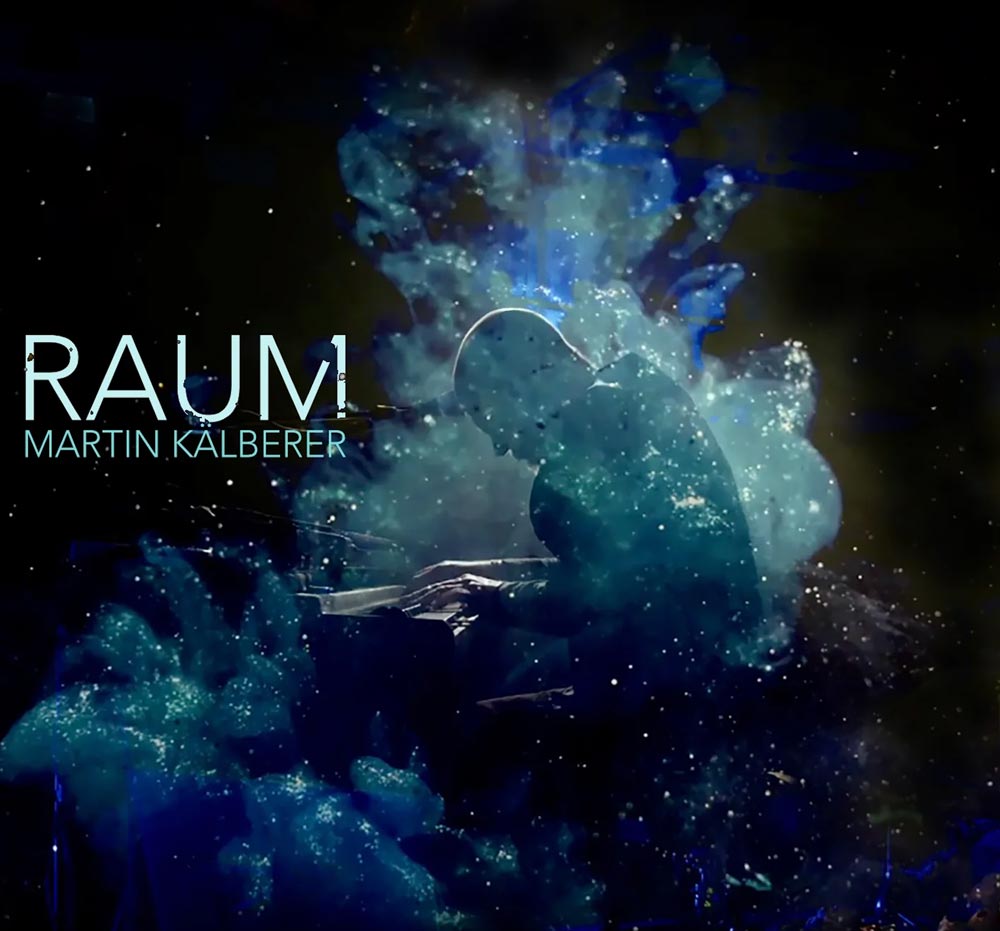
Naturally, we were extremely excited to see how the Sonora would fare against our reference, FinkTeam Borg – both of which, interestingly enough, were bred to perfection by Grandmaster Fink. In fact, all points that are more in the quantitative area (coarse dynamics, depth) went straight to the Borg. She was also the one who made the timpani sound even firmer and more menacing and made the audience move a lot more – or rather, made our legs bounce along – with the powerful bass drum attacks. The Sonora seemed a touch slower here.
But there is so much more. I would like to call it “grace” and “tonal elegance”. The wonderfully multi-layered voice of Kristin Asbjörnsen not only placed the Sonora almost holographically in the room, but also transported it with an extraordinarily cultivated and transparent resolution and immense richness of timbre. Although the Borg is a real fine spirit in the mid-high range and has long been an incorruptible benchmark for us in terms of naturalness, it only came second in the tonal comparison. To put it simply, the Sonora simply sounds beautiful and right.
Conclusion Peak Consult Sonora
With their artificial leather baffle cover and the perfectly crafted, solid walls with real wood planking made of American walnut, the Sonora look a bit like they’ve fallen out of time. Perhaps they are, because they combine a technology that has been known for many years and mechanical tricks that have been known for a long time with the greatest effort and consistency. All this comes at a price, but it also produces an outstandingly beautiful result: the Sonora may not be a world champion in dynamics, but it has a tonal beauty and authenticity that has few rivals even in this class.
Rating
Sound QualityUsabilityBuild QualitySummary |
| The rating always refers to the respective price category. |
| | Enormously fine, musically natural tuning |
| | Amazingly realistic reproduction |
| | Electrically undemanding, suitable for any amplifier |
| | Outstanding housing quality |
Distribution:
Peak Consult,
Langelandsvej 12
DK-5500 Middelfart
www.peak-consult.dk
Price (manufacturer’s recommendation):
Peak Consult Sonora: 25,000 euros
Technical data
| Peak Consult Sonora | |
|---|---|
| Concept: | passive 2-way floorstanding speaker |
| Fitting: | TMT: 1 x 17 cm, HT: 1 x 20 mm, passive diaphragm: 1 x 20 cm |
| Nominal impedance: | 7.4 Ohm |
| efficiency (2.83 V/m): | 83 dB |
| Maximum level (permanent/short-term): | 95 / 105 dB |
| Minimum power for maximum level (duration) | >35 watts |
| Dimensions (W x H x D): | 113.0 x 28.0 x 38.5 cm |
| Weight: | 48.4 kilogram |
| All technical data | |
Teammates and opponents:
Test integrated amplifier Soulnote A-2
Test FinkTeam Audio Borg: the new LowBeats reference



